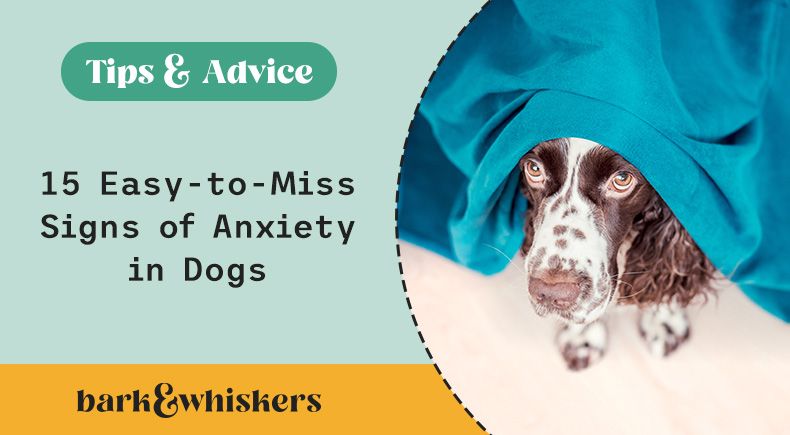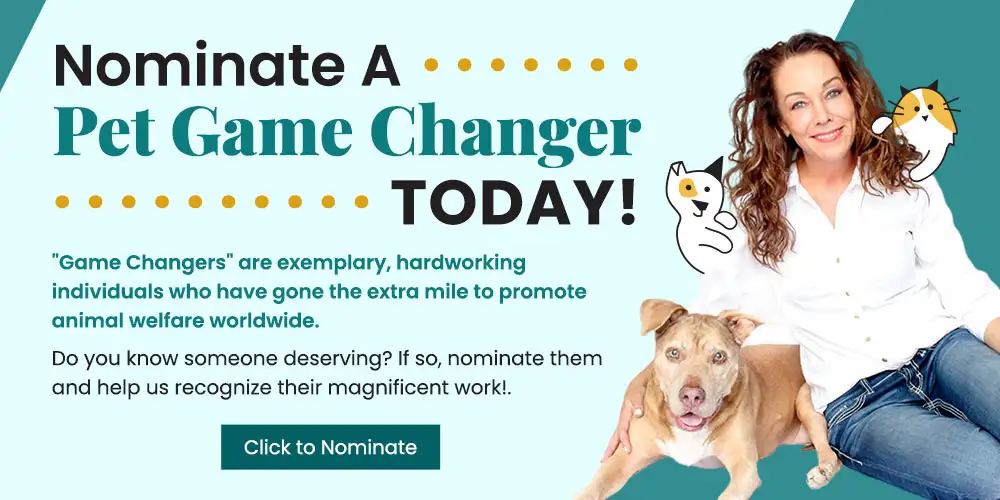15 Easy-to-Miss Signs of Anxiety in Dogs
Like humans, dogs can experience feelings of anxiety. Your dog may not always show obvious symptoms, like hiding, shaking or howling, so know these much more subtle signs. To get to the root of the anxiety, try these soothing options to help calm your pup's nerves naturally.

STORY AT-A-GLANCE
- Learning to recognize the sometimes-subtle symptoms of anxiety in dogs is the first step to getting them the help they may need
- Your dog’s diarrhea, yawning or destructive behaviors may be due to feelings of nervousness or stress
- Drooling, increased shedding, excessive barking and compulsive behaviors may also be due to anxiety
- Many cases of anxiety in pets are due to incomplete or unsuccessful socialization as a puppy
- One way to improve your dog’s anxiety is to make sure he’s getting lots of exercise — both mental and physical — daily
Like humans, dogs can experience feelings of anxiety. But the way it manifests may be different than you’d expect. In some cases, your dog may hide, shake or howl — all fairly obvious signs that your dog is anxious. In others, it can be much more difficult to spot.
You may not immediately make a connection between your dog’s diarrhea, yawning or destructive behaviors to feelings of nervousness or stress, but these are common signs of anxiety in dogs. Learning to recognize the symptoms — including the more subtle ones — is the first step to getting your dog the help she may need.
What Makes Dogs Anxious?
Dogs may be anxious or fearful for many reasons. Separation anxiety, for instance, may occur when you leave your dog alone, causing distress due to boredom or underlying frustrations. Loud noises, new visitors or new experiences can also cause fear in pets, which in some cases may progress to an extreme fear or phobia.
Some dogs have thunderstorm phobia, leading to extreme anxiety anytime a storm rolls through your neighborhood. Others may be fearful of fireworks. However, I believe many cases of anxiety are rooted in incomplete or unsuccessful/traumatic puppy socialization, which is why it’s so important to expose your puppy to as many new people, animals and experiences as possible, during their first three months of life.
If you’ve adopted an adult rescue pet, this may not be possible, and certain forms of anxiety, such as noise sensitivity and fear of heights and certain surfaces, such as shiny floors, may increase as your dog gets older.1
Anxiety Signs and Symptoms in Dogs
Remember, not all signs of anxiety in dogs are obvious and some are easy to miss. Common signs of fear, anxiety and stress to watch out for include:2
- Shaking, trembling, pacing or walking in wide circles
- Yawning, especially when frequent or extended
- Compulsive behaviors, such as licking themselves, floors or walls, or excessive barking, pacing, chewing or digging
- Shutting down or acting depressed
- Diarrhea
- Ears pulled or pinned back
- Urine dribbling
- Increased whining or howling
- Increased heart rate and panting — this is an involuntary response
- Drooling or lip-smacking
- Hiding behind you, furniture or other objects
- Hyperactivity, including nudging your legs with their muzzle
- Lowered or tucked tail
- Destructive behaviors
- Increased shedding
What’s Stressing Out Your Dog?
Ideally, tending to anxiety means resolving its underlying cause, which means getting to the bottom of what’s making your pet anxious. It’s possible that you’re inadvertently the source of the stress, especially if you use punishment-based training methods such as yelling, hitting or shock collars. Other common anxiety triggers include:
- Unwanted attention such as being randomly awakened from a nap or being forcibly hugged, kissed or held
- Lack of opportunities to express normal species- and breed-specific behaviors such as sniffing, running, retrieving or herding
- Exposure to the strange and unfamiliar (objects, animals or people)
- Changes in housing, household routine or household members
- Separation from family members, including other pets
It’s also a good idea to see your veterinarian if your dog is displaying signs of anxiety to ensure an underlying health condition isn’t involved.
Avoid Abrupt Desensitization
If possible, remove the stressful trigger from the dog’s environment and strive to maintain a steady routine that provides a source of security to your pup. If it’s not possible to remove the trigger, consider gentle desensitization done in a positive way.
My suggestion is that you work with a fear-free trainer to learn what your dog’s triggers are and how best to address them, remembering that exposing your dog to the stressor until it no longer evokes a response is not recommended.
“Abrupt desensitization, where you expose your dog to the thing that is causing stress until they no longer react, is no longer thought to be the best way to help with stress and anxiety in dogs,” explained Dr. Katie Grzyb on PetMD. She continued:3
“To establish a new response to a stressor, you must develop a reward program for your dog, such as offering food, love, or an activity/playtime. The reward should always be earned, and training will be slow and steady. This should be done in a stable, safe environment, and not during anxious situations.
Treatment starts with learning control strategies at home, where your dog is required to earn everything by responding appropriately when you give a specific cue. This creates a predictable response from your dog’s perspective. Starting with calm tasks such as ‘sit’ or ‘lie down’ and then eventually moving to ‘focus’ and ‘escape’ responses will help set expectations for what will happen.”
Adjunctive Calming Strategies for Pets
While you work to get to the root of the anxiety and positively repattern behaviors, there are many natural options to help calm your dog’s nerves. Playing music, especially classical music, is one simple strategy. However, one of the most important steps is to make sure your dog is getting lots of exercise — both mental and physical — daily. I have found a dog’s anxiety is inversely proportional to the amount of exercise they get.
If anxiety occurs when your dog will be home alone, leave him with an article of clothing or blanket that has your scent on it. Schedule dog walkers, and check out doggie daycares. Look at remote treat-release toys or a lick mat to also help him pass the time. I also recommend consulting an integrative veterinarian about stress-lowering herbal and nutraceutical protocols.
If your dog’s anxiety appears to be getting worse instead of better, enlist the help of a force-free behaviorist or trainer, and also look into applied zoopharmacognosy.
Sources and References
Today's Pet Video:
Everything About This Dog Is Hilarious!
While other dog owners have been overwhelmed by Nori’s antics, her present owner says Nori’s the funniest thing she’s ever seen! You can’t be sad around this sweet pup!










